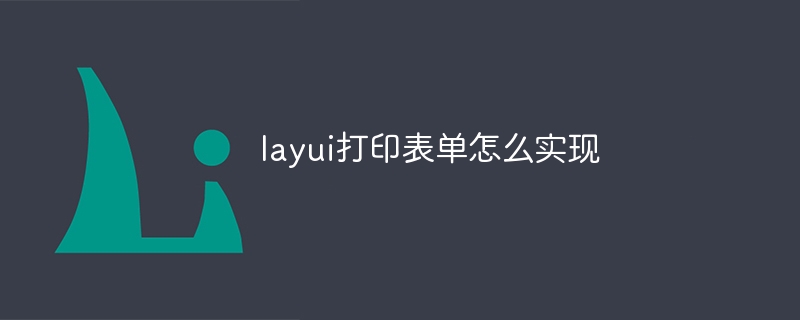
To use the layui framework to print a form, you need to perform the following steps in sequence: introduce the layui file, create a print button, listen to button events, obtain the form content, and call the layui print function. For example, use jQuery to get the form content and print it: $('#form').html() passed to print({title: 'Form Print', content: content}).

Implementation of layui printing form
Question: How to use the layui framework to print a form?
Answer:
To use the layui framework to print a form, the following steps are required:
Step 1: Import the layui file
<script src="layui/layui.js"></script>
Step 2: Create a button
Create a button to trigger the print function.
<button id="printBtn">打印表单</button>
Step 3: Listen to button events
Use layui’s on() method to listen to button click events.
layui.use(['layer', 'print'], function () {
var layer = layui.layer;
var print = layui.print;
layui.on('click', '#printBtn', function () {
// ...
});
});Step 4: Get the form content
In the listener function, use the html() method of jQuery or layui to get the form content.
For example, using jQuery:
var content = $('#form').html();Step 5: Call the layui print function
Use the print() method to print the form content.
print({
title: '表单打印', // 打印标题
content: content, // 打印内容
});Sample code:
<script src="layui/layui.js"></script><button id="printBtn">打印表单</button> <script> layui.use(['layer', 'print'], function () { var layer = layui.layer; var print = layui.print; layui.on('click', '#printBtn', function () { var content = $('#form').html(); print({ title: '表单打印', content: content }); }); }); </script>
The above is the detailed content of How to implement layui printing form. For more information, please follow other related articles on the PHP Chinese website!
 css disable click event
css disable click event
 Garbled characters starting with ^quxjg$c
Garbled characters starting with ^quxjg$c
 Why the computer keeps restarting automatically
Why the computer keeps restarting automatically
 Usage of SetTimer function
Usage of SetTimer function
 head command usage
head command usage
 How much is Dimensity 6020 equivalent to Snapdragon?
How much is Dimensity 6020 equivalent to Snapdragon?
 How to solve the problem of garbled characters when opening a web page
How to solve the problem of garbled characters when opening a web page
 Cryptocurrency trading platform rankings
Cryptocurrency trading platform rankings